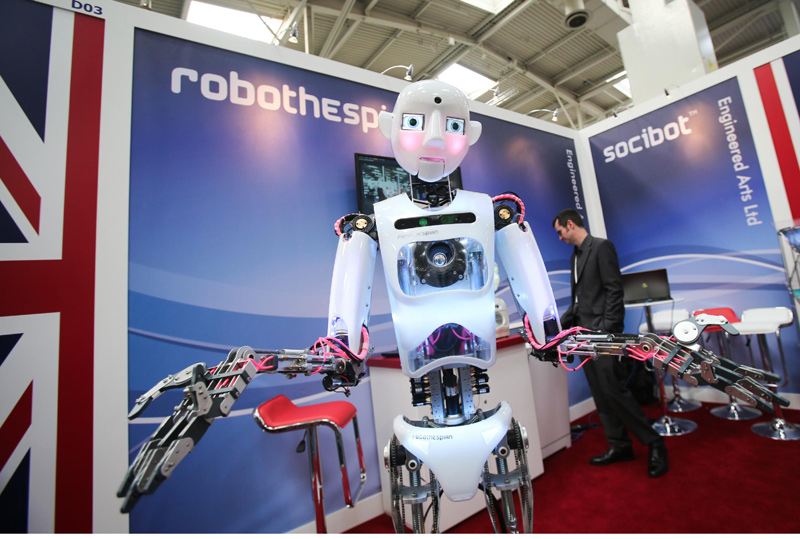|
Swarm robotics is a groundbreaking field that draws inspiration from nature to create intelligent systems composed of multiple robots working together in a coordinated manner. By emulating the collective behavior of insect colonies or animal groups, swarm robotics aims to unlock new possibilities in various domains, from industrial automation to search and rescue missions. One of the key advantages of swarm robotics lies in its ability to leverage the power of collective intelligence. Just as ants collaborate to find food or bees communicate to build complex hives, robotic swarms can perform tasks more efficiently and effectively by distributing the workload among multiple agents. This distributed approach offers inherent fault tolerance and robustness, as the system can continue to function even if individual robots fail or are removed from the group. The strength of swarm robotics also lies in its adaptability and scalability. The simple rules governing the individual robots' behavior can give rise to emergent behaviors at the swarm level, allowing the system to tackle complex tasks that would be difficult for a single robot to accomplish alone. Moreover, swarm robotics can easily scale up or down by adding or removing robots, making it suitable for applications ranging from small-scale operations to large-scale deployments. In industrial settings, swarm robotics has the potential to revolutionize manufacturing processes. By deploying a swarm of robots on the factory floor, tasks such as assembly, packaging, and quality control can be carried out with increased speed and precision. These robotic swarms can autonomously coordinate their actions, optimizing resource allocation and minimizing downtime. As a result, production efficiency can be significantly improved, leading to cost savings and enhanced productivity. Swarm robotics also holds promise in disaster response scenarios. During search and rescue operations, robotic swarms can navigate hazardous environments, locate survivors, and relay vital information back to human responders. The ability of these swarms to quickly cover large areas and collaborate in real-time enables more efficient and timely rescue efforts, potentially saving lives in critical situations. In the field of agriculture, swarm robotics can assist with crop monitoring, pollination, and targeted pest control. By deploying a swarm of robots equipped with sensors and cameras, farmers can gather precise data on soil conditions, plant health, and environmental factors. This information can then be used to optimize irrigation, apply fertilizers or pesticides only where needed, and ensure the overall well-being of the crops. Swarm robotics offers a promising solution for sustainable and efficient farming practices in the face of increasing global food demand. While swarm robotics presents numerous opportunities, there are still challenges to overcome. Coordinating the actions of hundreds or thousands of robots in a dynamic environment requires sophisticated algorithms and robust communication protocols. Researchers are actively exploring these areas, striving to develop more advanced swarm intelligence techniques that enable seamless cooperation and adaptation. In conclusion, swarm robotics represents a paradigm shift in the way we approach complex tasks and problem-solving. By harnessing the power of collective intelligence, these systems have the potential to revolutionize various industries and domains. As researchers continue to push the boundaries of swarm robotics, we can look forward to a future where intelligent robotic swarms work hand in hand with humans, augmenting our capabilities and tackling challenges beyond the reach of individual robots.  |
